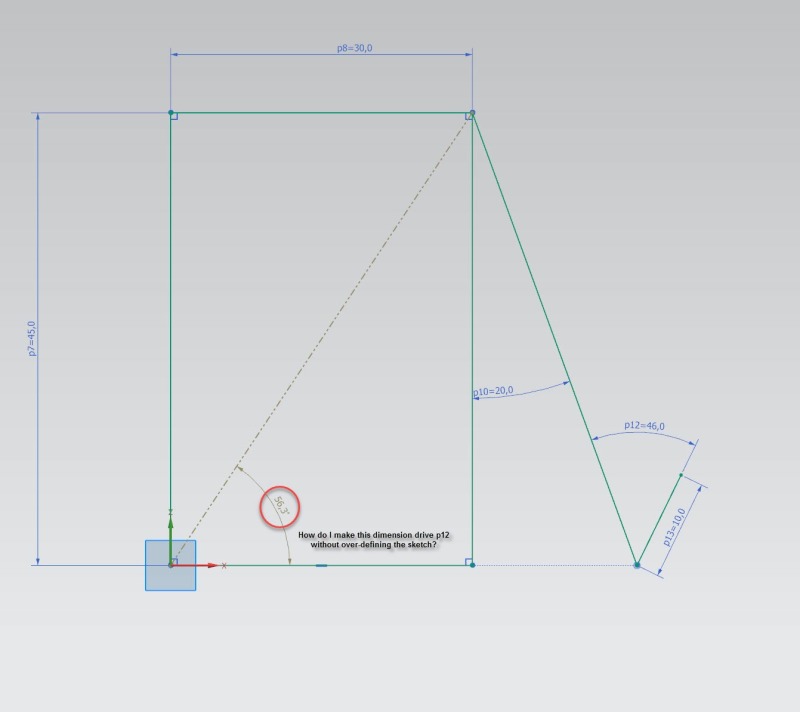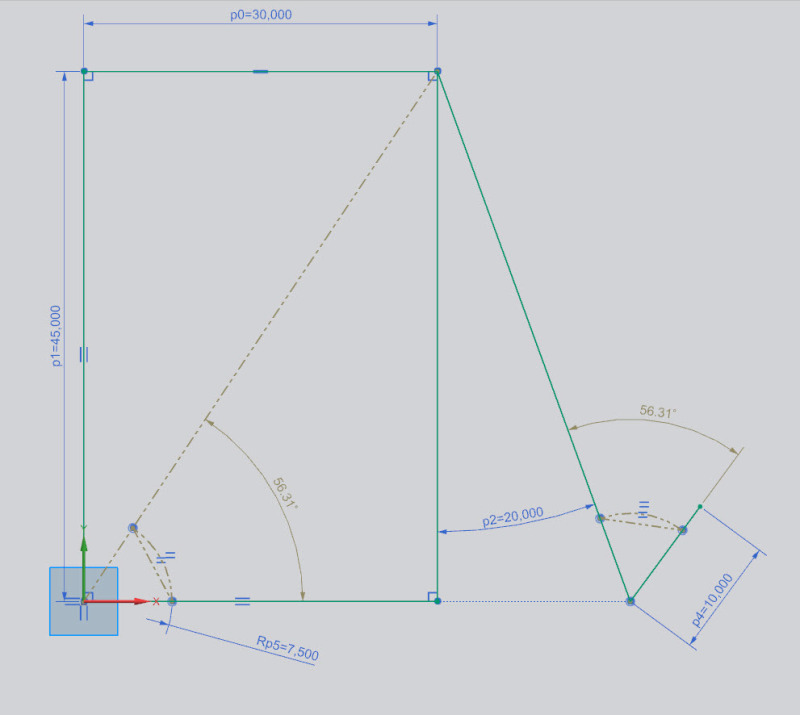If I have part of a sketch that is fully defined by driving dimensions, how can I take a driven/reference dimension from that and use it to drive another dimension in the same sketch? It seems that as soon as I make a driving dimension a reference dimension, I lose the ability to use that value in an expression. I've attach an example sketch describing what I mean.

Being new to NX and coming from a SolidWorks background, I'm used to being able to do this and it really helps with visualizing how geometry changes with a given set of inputs.
Any help would be greatly appreciated!

Being new to NX and coming from a SolidWorks background, I'm used to being able to do this and it really helps with visualizing how geometry changes with a given set of inputs.
Any help would be greatly appreciated!


